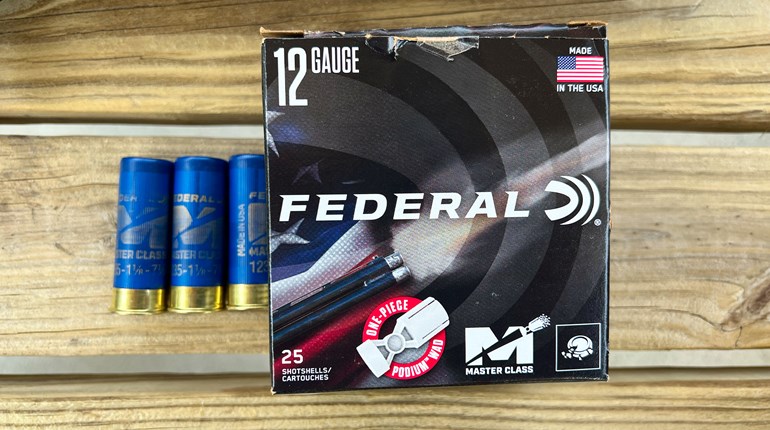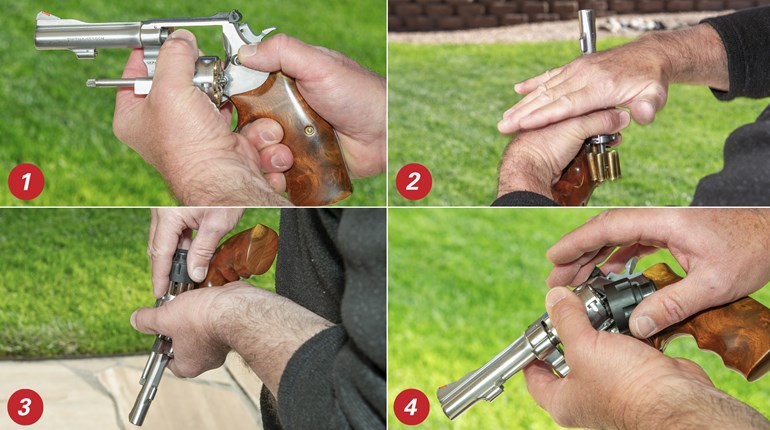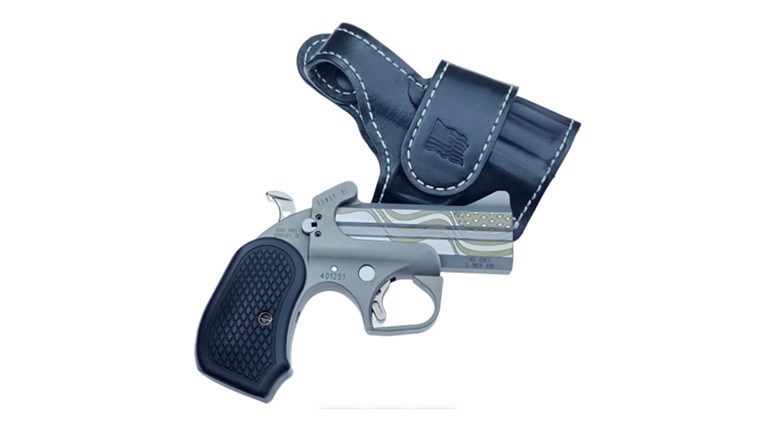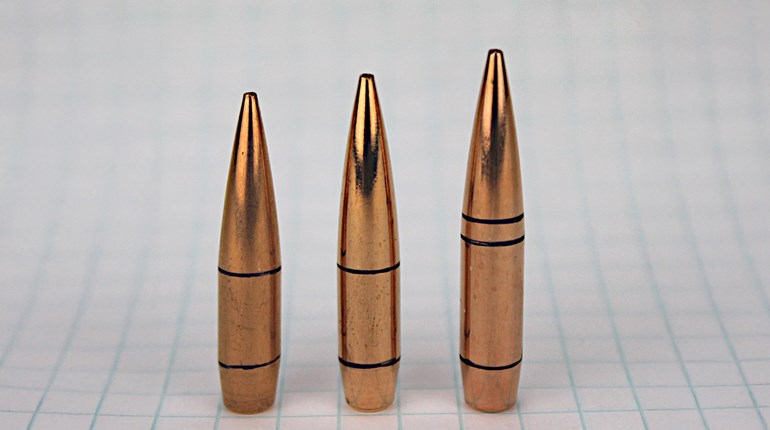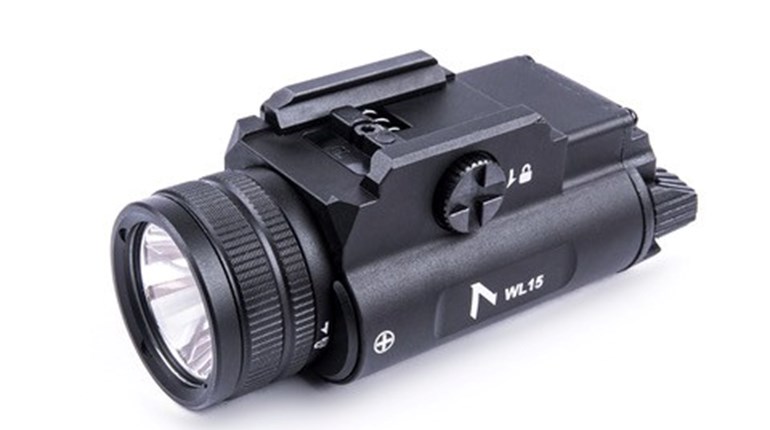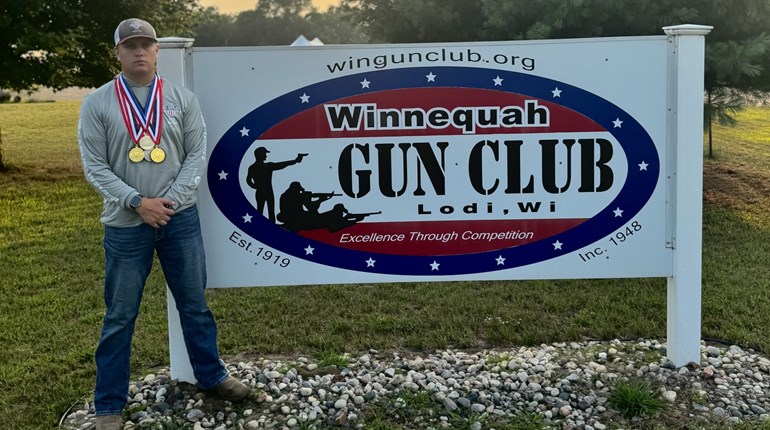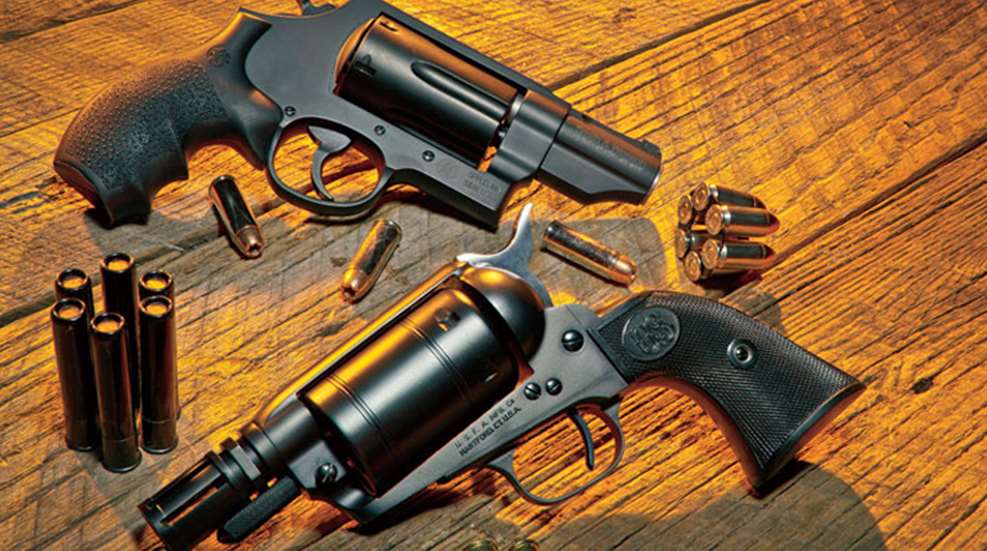
Handguns firing multiple projectiles date almost to the invention of gunpowder. The first hand cannons consisted of a bronze pipe plugged at one end and lashed to a piece of wood. These crude guns had a touch hole on the top or side to access the powder charge. Loaded with a projectile or projectiles of some kind in front of a quantity of blackpowder, the hand cannon would unleash thunder (hopefully out the muzzle) when a glowing piece of twine contacted the priming power in the touch hole.
With no sights, the hand cannon was simply pointed in the direction of the target using a primitive, almost instinctive, form of triangulation with the weapon held below eye level. In the hands of a skilled user, the hand cannon could be quite effective out to perhaps 15 feet or more.
One of the most famous multiple-projectile handguns was the two-barrel LeMat revolver used by the Confederacy during the Civil War. While the cylinder of this percussion revolver held nine chambers, each with a .42-caliber ball, it revolved around another barrel of .63 caliber. This second barrel was normally loaded with shot and fired after moving a pivoting striker on the hammer.
With the advent of fixed ammunition, special shot cartridges were manufactured in many handgun calibers, but these were mainly intended for and used on small pests at close range. The rifling in the barrels did nothing to keep a tight pattern, and such rounds were seldom lethal against a human predator.
This began to change in 1992, when Jerry Baber—an unusually talented gun designer—conceived and manufactured a revolver he called the Thunder Five. A large, modern revolver, the Thunder Five had a swing-out cylinder that held five rounds of 3-inch, .410-bore shotshells or .45 Colt cartridges. The 48-ounce revolver also accepted an optional cylinder in .45-70, and Baber’s company offered inserts in order to use 9 mm, .38 Super and .357 Mag. ammunition in the gun. Production of the Thunder Five ceased around 2005, but it wasn’t the end of the modern shot pistol—not by a long shot.
About the time the Thunder Five went out of production, Taurus announced the genre-defining Judge. Its five-round cylinder held .45 Colt cartridges and .410 shotshells, and with clever marketing, the revolver received a lot of attention. The Judge was initially offered in stainless steel with a cylinder limited to 2.5-inch .410 ammunition (along with .45 Colt), but was soon followed by a version that would accept both 2.5- and 3-inch shotshells. Today Taurus offers no less than nine versions of the Judge, including a smaller model called the Public Defender. Five of these come with Crimson Trace Lasergrips, one has a light rail and one is built on a polymer frame.
Taurus .45/.410 revolvers have become so popular that Federal, Remington and Winchester Ammunition have designed .410 loads especially for defensive use in these type of handguns.
Beyond the Judge
As with all good ideas, Taurus now has company. The maker on whose revolver design the Judge was largely based recently introduced a hand scattergun of its own to meet the “bull” head-on. Called the Governor, this new Smith & Wesson revolver holds six rounds instead of five, one-upping the Judge and the Thunder Five. Finished in matte black, the Governor has a scandium frame with a stainless steel cylinder and barrel.
There is another interesting feature that sets the Governor apart. Instead of being just a .45 Colt/.410 revolver, the Governor throws .45 ACP into the mix. Using six-, three- or two-shot clips, you can also “govern” with your choice of .45 ACP loads, and the choices are endless. The Governor comes with two, six-shot, full-moon clips and three, two-shot clips.
Chambered for 2.5-inch .410 rounds, the Governor can mix these shotshells with .45 Colt as well as .45 ACP, using two- or three-shot clips. Thus, you could load three rounds of .410, followed by three rounds of .45 ACP (or .45 Colt). One sensible approach would be to close the chamber so that the three rounds of .410 would be first in line for close-range defense, backed up by the three .45s. This is an option no other revolver currently presents, but the Governor is not the only shot pistol that has recently come along.
Single-Action Scatter-Pistol
The enormous success of cowboy action shooting has spawned many thousands of men and women, young and “mature,” who have become extremely adept at running the single-action revolver. These weekend cowboys and cowgirls fire millions of rounds from single-action revolvers every year. They come from an wide variety of backgrounds to partake in this fun family sport, and they all are well aware of the dangers sometimes encountered in our society.
I know many of these folks whose handgun of choice is the single-action revolver with which they shoot steel targets every weekend. Although not yet approved for most cowboy action matches, there is now another single-action option ready to ride the range of personal protection.
The M4-410 (and a similar, more spartan version called simply the Shot Pistol) comes from U.S. Fire Arms (USFA), makers of what many consider to be the finest clones of the Colt Single Action Army in the world. This hand scattergun amounts to a single-action revolver with a stretched frame and a 2-inch barrel. It ends in USFA’s version of an M4 carbine flash hider, which has a .50-caliber hole through it. Closed off at the bottom, this short extension acts as a muzzle brake to help keep the muzzle down. Finished in matte blue, the M4-410 comes with USFA’s black, checkered grips and, as usual, is fitted throughout like a fine Swiss watch.
Unlike a standard single-action revolver, the M4-410’s six-shot cylinder has no flutes, leaving it smooth much like a Colt Walker Model. There is also no loading gate on this revolver. Instead, a smooth, radiused channel provides access to the chambers for inserting rounds. Since there is no ejector on the gun, the rear of the cylinder is rounded, leaving room to pick out empty brass with a fingernail.
Since it is often advisable to carry only five rounds in most single-action revolvers, a false cylinder-stop recess is machined above one chamber, forward of the standard stop. When it comes around on the left side of the pistol, the extra stop notch can be observed or felt to verify that it is adjacent to the topstrap. In this position, the empty chamber is next to come in line with the barrel. When the hammer is fully cocked from its loading notch, the empty chamber is locked in place at 12 o’clock. The hammer can then be lowered safely onto the empty chamber.
Like the other modern shotshell revolvers, the M4-410 and its sibling Shot Pistol will accept both 2.5-inch .410 shells and .45 Colt cartridges in a mix-and-match, staggered arrangement or by themselves. It will also take .45 Schofield ammunition, which amounts to a short .45 Colt cartridge now mainly manufactured for cowboy action competition.
Spinning Cylinders
Several models of the Judge have been reviewed in these pages before, so I tested only the Smith & Wesson Governor and the U.S. Fire Arms M4-410. All firing was done from
30 feet, likely the farthest distance one would want to use either revolver for self-defense.Since the M4-410 has no sights, it is aimed by merely looking down the op of the frame and barrel. Consequently, it shot from 16 to 20 inches high for me at this distance. Since single-action revolvers of this type normally have a relatively high front sight, shooting high made sense.
At 30 feet, shot patterns were effective, and even with no sights, I was able to shoot six-shot groups of .45 Colt into 6 inches using standard lead-bullet loads. Full-power, JHP loads performed even better, producing groups of about 4 inches. I shot the M4-410 while standing.
The Smith & Wesson Governor performed a bit better, producing groups of .45 Colt and .45 ACP that impacted at point of aim and were a little tighter. No doubt this was due to the gun’s fixed sights, the front one having a tritium insert. While standing at 30 feet, I got six-shot groups of 4 to 5 inches. The Governor was faster to get on target and more comfortable to shoot.
Shotshell Solutions
Just which type of handgun is best for personal protection is an individual decision—only you can decide what’s right for you. If a shotshell pistol fits into your defensive plan, Smith & Wesson and U.S. Fire Arms now give you two excellent options.
Specifications:
Smith & Wesson Governor
Manufacturer: Smith & Wesson;
(800) 331-0852, www.smith-wesson.com
Action Type: Double-action revolver
Caliber: .45 ACP, .45 Colt and .410-bore shotshell (2.5 inch)
Capacity: 6 rounds
Frame: Scandium alloy with matte-
black finishBarrel Length: 2.75 inches













